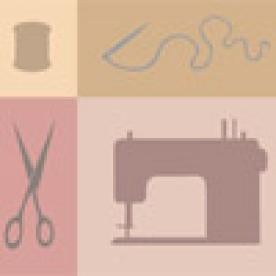Takeaway: Successfully overcoming a proposed obviousness argument requires Patent Owner to present arguments that are responsive to the manner in which Petitioner has proposed combining the applied references under 35 U.S.C. § 103.
In its Final Written Decision, the Board held that each of challenged claims 1, 2, 5-7, 10, 12, 13, 17-21, 23–29, 31, 33, and 34 of the ’446 patent was shown to be unpatentable by a preponderance of the evidence. The Board dismissed Petitioner’s Motion to Exclude as moot because resolution of the Motion was not necessary for the Board to reach its Final Written Decision and because Patent Owner’s prior invention arguments were found to be unpersuasive even if the challenged evidence were to be considered.
Petitioner had filed for inter partes review of claims 1-34 of the ’446 patent. The Board instituted trial with respect to claims 1, 2, 5-7, 10, 12, 13, 17–21, 23–29, 31, 33, and 34 on anticipation grounds (Watabe) and with respect to claims 1, 2, 5-7, and 23-27 on obviousness grounds (Watabe taken in combination with Reed). After institution, Petitioner had filed a Motion to Exclude evidence which Patent Owner had relied on in its Response.
The ’446 patent relates generally to the stitching together of two or more fabric layers such as would be carried out in the process of quilting, with a goal of producing “precise consistent stitches that are closely and uniformly spaced.” In the ’446 patent, a motion detector detects fabric movement in order to automatically synchronize the user’s movement of the stack with the delivery of stitch strokes.
Each of the challenges in this proceeding was based at least in part on Watabe qualifying as a prior art reference under 35 U.S.C. § 102(a). Patent Owner disagreed, arguing that Watabe was not prior art against any of the challenged claims because named inventor Ralph J. Koerner invented the claimed invention before the October 8, 2002 publication date of Watabe. In particular, Patent Owner asserted that Mr. Koerner conceived of the invention prior to the publication date of Watabe and thereafter exercised reasonable diligence in reducing that invention to practice. After considering all of the pertinent evidence, the Board concluded that Patent Owner had not established conception of the invention prior to the October 8, 2002 publication date of Watabe. Accordingly, Watabe was found to be prior art against the challenged claims under 35 U.S.C. § 102(a).
The Board then proceeded to conclude that Petitioner had sufficiently shown that Watabe anticipates independent claim 1. And, because it was the Board’s view that independent claims 10, 21, 23, 28, and 31 “are not materially different than claim 1 for purposes of comparison with Watabe,” the Board concluded that these other independent claims were anticipated by Watabe as well. The Board also concluded that Petitioner had sufficiently shown that Watabe anticipates dependent claims 2, 5-7, 12, 13, 17-20, 24-27, 29, 33, and 34.
As for the obviousness challenge in view of Watabe taken in combination with Reed, Petitioner relied upon Reed as expressly teaching “that the Watabe prior art-sewing machine can be used to stitch together multiple layers of fabric such as in quilting.” Patent Owner disputed this assertion. The Board found that Patent Owner’s arguments were not responsive to the manner in which Petitioner had proposed applying Watabe and Reed to the claims. As stated by the Board, “Petitioner does not argue for physically combining the Watabe and Reed prior art-machines or modifying either of them in view of the other” but, instead, “Petitioner relies on Reed for providing an express teaching to the person of ordinary skill in the art that the Watabe prior art-sewing machine can be used to stitch together multiple layers of fabric.” Because the Board found that Petitioner’s reasoning was persuasive, it agreed with Petitioner that claims 1, 2, 5-7, and 23-27 would have been obvious over Watabe taken in combination with Reed.
Handi Quilter, Inc. and Tacony Corporation v. Bernina International AG, IPR2013-00364
Paper 39: Final Written Decision
Dated: September 25, 2014
Patent 6,883,446 B2
Before: Jennifer S. Bisk, Michael J. Fitzpatrick, and Georgianna W. Braden
Written by: Fitzpatrick
Related Proceedings: Bernina International AG v. Handi Quilter, Inc., Case No. 2:12-cv-07079-JD (E.D. Pa.), Bernina International AG v. Tacony Corp., Case No. 2:13-cv-01787-JD (E.D. Pa.)



 i
i

